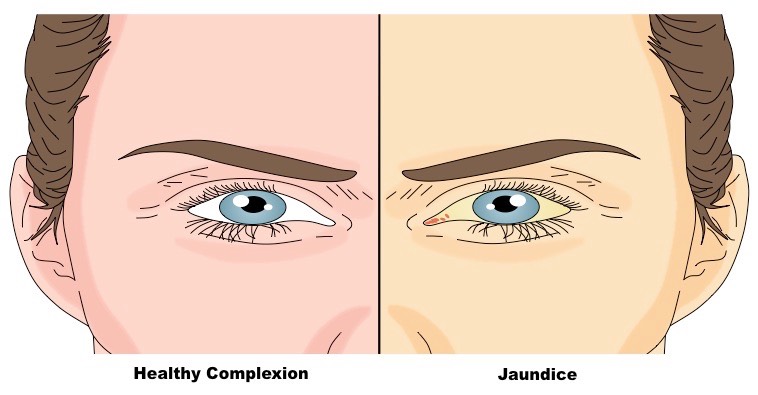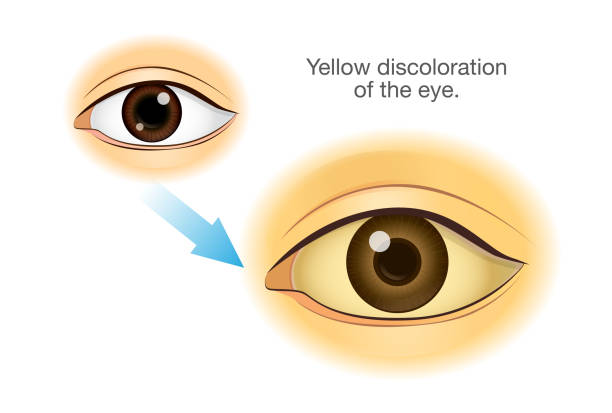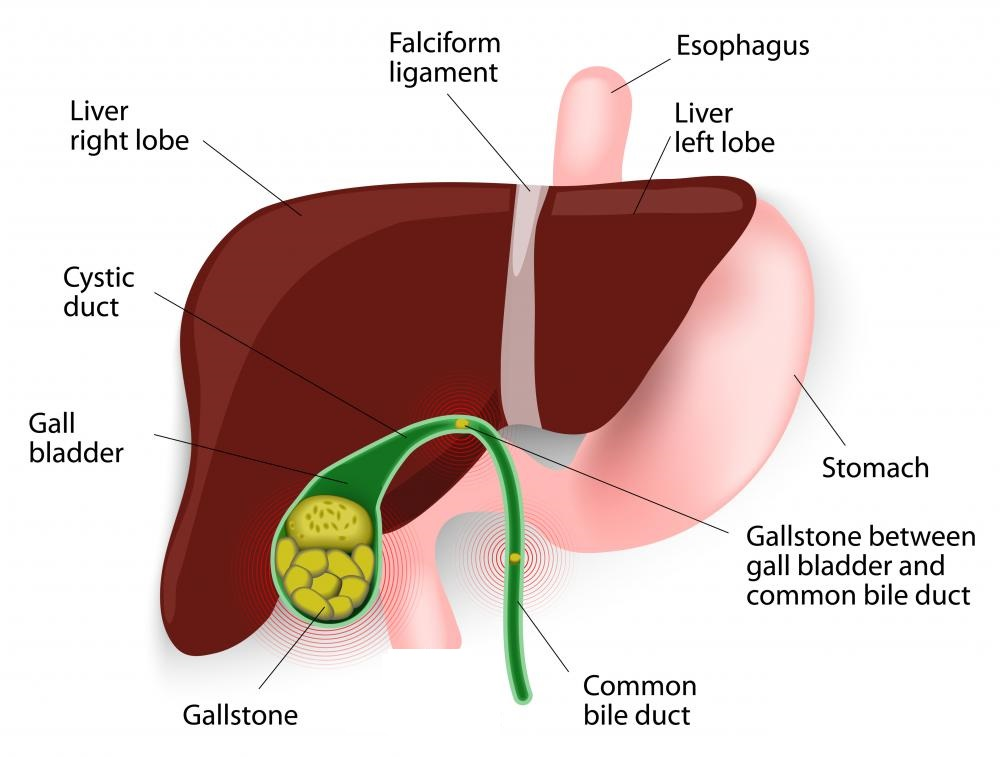Jaundice
What is Jaundice?
Jaundice is the term used for describing yellowness of the skin and eyes. Icterus is the medical term for jaundice. Jaundice occurs due to deposition of bilirubin in tissues. There can be various causes of jaundice as described below – ranging from non-serious conditions such as Gilbert’s syndrome to life threatening conditions such as pancreas cancer. It is important to determine the cause of jaundice with necessary evaluation, to ensure optimal jaundice treatment.
What are the Causes of Jaundice?
Jaundice treatment depends on the underlying disease, leading to the occurrence of jaundice, hence it is important to identify the cause of Jaundice. Various conditions can lead to jaundice as described below:
Hematologic (Blood Disorders) - Jaundice occurring due to breakdown of blood cells, is also known as haemolytic jaundice. In the human body, red blood cells are destroyed after 120 days of their life span and are converted into bilirubin. This conversion takes place in the liver. If the haemolysis or breakdown of red blood cells in the body increases, the liver is not able to process the bilirubin rapidly. This causes the excess bilirubin to leak out of liver tissues, into blood and in various tissues of body, causes yellow pigmentation on the skin and eyes i.e. jaundice.



In India, one of the common causes of haemolytic jaundice is the inheritance of a rare blood genetic disorder called sickle cell anaemia. In sickle cell disease, the red blood cells are unusually crescent-shaped. It causes the red blood cells to break down easily and more rapidly than in usual conditions. The jaundice specialists at Midas Hospital can conduct the appropriate diagnostic tests for evaluation of haemolytic jaundice and thus providing the necessary pathological jaundice treatment.
Hereditary Spherocytosis is another haemolytic (blood-related) cause of jaundice. It is a rare genetic disorder where an affected individual will carry sphere-shaped red blood cells rather than the normal disc-shaped ones. Thalassemia is another common cause of haemolytic (blood-related) jaundice, due to abnormal formation of haemoglobin which leads to breakdown of red blood cells in the body.
Hepatic (Liver Disorders) – Jaundice that occurs due to the improper functioning of liver or liver tissues is called hepatic jaundice, and the common causes for this is liver cirrhosis. Liver cirrhosis is long-term scarring of the liver tissues. The scarring occurs due to following long-term inflammation (swelling) and damage to liver tissue. This commonly occurs due to exposure to harmful agents like alcohol. Another common reason is viral hepatitis infection (Hepatitis B, Hepatitis C). The virus can cause inflammation and infection in liver tissues. The route of entry for the virus in the body is via exposure to infected blood or body fluids Other emerging condition leading to cirrhosis is fatty liver (excess fat in liver). The risk factors for fatty liver include obesity, high cholesterol, high blood pressure (hypertension) and diabetes. Uncommon conditions leading to cirrhosis include autoimmune diseases such as Primary Biliary Cirrhosis/Primary Biliary Cholangitis, Primary Sclerosing Cholangitis, Autoimmune Hepatitis where immune system of a body attacks its own tissues (in this case liver or bile ducts) instead of fighting infection. In Primary Biliary Cirrhosis/Primary Biliary Cholangitis or Primary Sclerosing Cholangitis, the immune system attacks bile ducts due to which bile is not removed efficiently, leading to accumulation of bile and damage to liver tissue. In autoimmune hepatitis, the immune system attacks the liver cells leading to damage, scarring, and cirrhosis Rare conditions leading to cirrhosis include Wilson’s disease (excess copper deposit) and Hemachromatosis (excess iron deposit).
Apart from cirrhosis, jaundice can occur due to viral infection – Hepatitis A and Hepatitis E, which are transmitted via contaminated food or water. These viruses can lead to inflammation and damage to liver tissue resulting in Jaundice. Liver cancer can also lead to hepatic jaundice. In liver cancer, The rapidly multiplying cancer cells invade the healthy liver. Obstructive Jaundice (Blockage in Bile Ducts) – There are various conditions when there is a disruption in the flow of bile from the liver. This can occur due to blockage in bile ducts from stones (bile duct stones), sludge, worms etc. or narrowing of bile duct (bile duct stricture) This leads to increased concentration of the bile inside the duct, which may then come out of the liver tissue, causing jaundice. Most obstructions in the bile duct occur due to the accumulation of gall bladder stones in the common bile duct (bile duct stones also known as choledocholithiasis) causing jaundice. Narrowing of bile duct i.e. bile duct stricture can occur due to either non-cancerous conditions such as benign biliary stricture – post bile duct surgery, chronic pancreatitis etc. or various cancers such as Pancreatic or pancreas cancer, bile duct cancer (also known as cholangiocarcinoma), gall bladder cancer. Rarely, inherited structural abnormalities at birth may also cause jaundice. Irrespective of the cause, experts at Midas hospital assure you of the best jaundice treatment.
What are the signs of Jaundice ?
The signs of jaundice include yellowing of the skin, the white portion of eyes and nails. The yellowing occurs due to the excess bile pigment deposition in surrounding tissues. The bile pigment being yellow produces such a yellow tinge Other symptoms include change in colour of urine to dark urine or change in colour of stools to “clay” coloured stools. Depending on the cause of jaundice, patients may additionally experience flu-like symptoms, chills, weight loss, abdominal pain etc.
What are the tests done for evaluation of Jaundice?
Evaluation of jaundice involves blood tests, imaging studies (ultrasound, CT scan, MRI/MRCP) and endoscopic procedures such as endoscopic ultrasound or endosonography (EUS). The jaundice specialist in Midas hospital may need to perform various tests to determine the cause of jaundice.
The Endoscopic Ultrasound procedure requires precision. Dr. Saurabh Mukewar at Midas Hospital can perform this evaluation with utmost accuracy. The EUS is the scientific blend of endoscopy with ultrasonography, producing high-quality images of the pancreas and the biliary tree. The high-frequency ultrasonic waves produce a detailed image of the pancreas and its ducts. It also helps in tissue sampling for better diagnosis for obstructive jaundice. Dr. Saurabh Mukewar has performed this procedure in 1500 patients, more than any doctor in Central India.
What is the treatment of Jaundice ?
Jaundice can be due to physiologic reasons eg. at birth or pathologic reasons as mentioned above. The pathological jaundice treatment depends on the cause of jaundice. Hemolytic jaundice requires management of underlying blood disorder. Hepatic jaundice requires management of liver disease such as cirrhosis by jaundice specialist or Hepatologist. Obstructive jaundice requires treatment with a procedure called endoscopic retrograde cholangiopancreatography (ERCP). It is an advanced method combining x-ray with endoscopy to reveal the presence of an obstruction in the path of the bile. This enables gastroenterologists to remove the stones or sludge causing blockage or place plastic or metal stents across areas of narrowing to relieve the jaundice.
At Midas more than 5,000 ERCPs have been performed till date with excellent outcomes – low complication rates and very high success rates >98%. Not only regular ERCPs, but the most advanced and complex ERCPs are performed routinely by the experts at Midas. In addition, Midas is the first hospital in Vidarbha to perform cholangioscopy (endoscopy of the bile ducts) using Boston Scientific Digital Spyglass Cholangioscope. Cholangioscopy is an advanced technique of endoscopy of the bile ducts. With cholangioscopy, large stones of the bile duct can be broken into small pieces for successful endoscopic removal. This technique also permits doctors to obtain tissue from inside the bile duct for analysis.
The Midas team, has a vast experience of treating thousands of patients with jaundice. We have experts in various departments – radiologists, pathologists, gastroenterologists (gastrologists), hepatologists, interventional endoscopists, gastrointestinal surgeons (GI surgeons) who work together as a “team” to provide best pathological jaundice treatment. At Midas, we make every effort to understand the “root” cause of the jaundice. To assist in diagnosing the cause of jaundice we have all the necessary investigations with the most advanced technologies which can be performed by our experts under one roof. At Midas, you can be assured that you will get the pathological jaundice treatment with the jaundice specialist and a team of experts.
